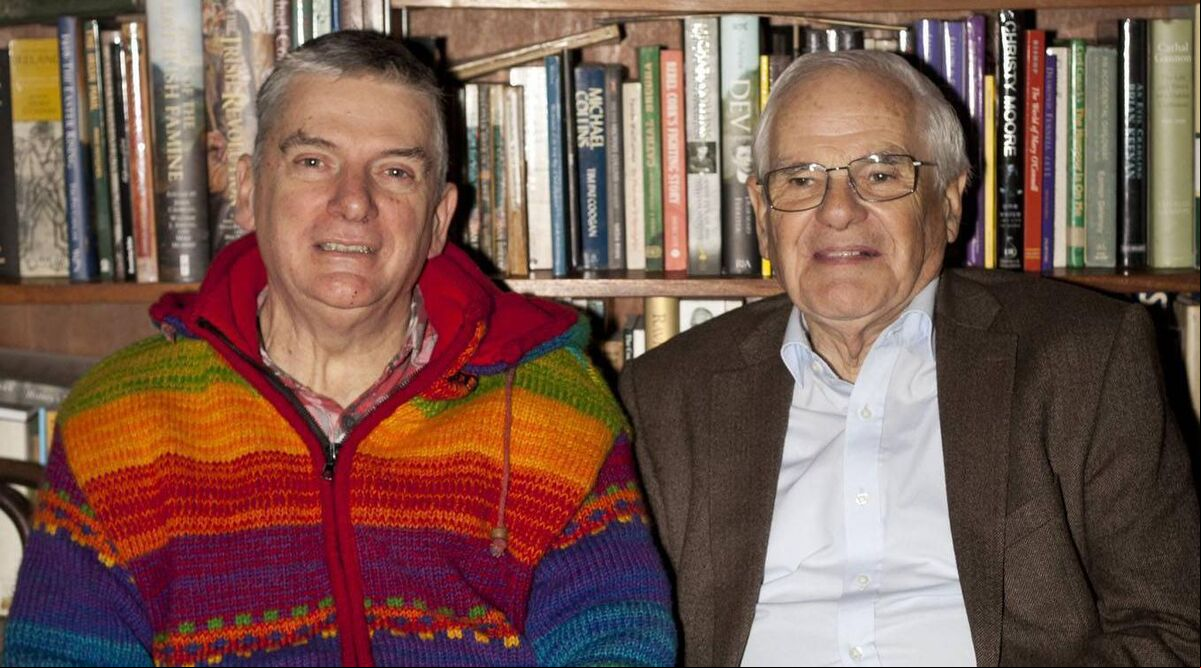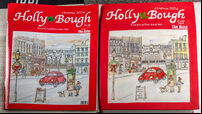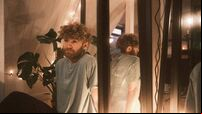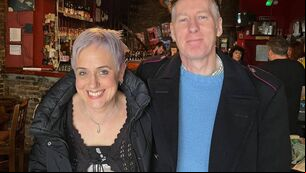Interview: Cork legend-'de pucker'-Seán Ó Sé

Seán Ó Sé continues to perform both at home and on international expeditions, often on behalf of the Irish Government or Gael Linn.
His indefatigable spirit and ever-enquiring mind was born and honed in his childhood home of Ballylickey, located, he says, “three miles outside Bantry to the west, on the Glengarrif Road, the most easterly inlet in Bantry Bay.”
His natural gift for storytelling and his unique way of speaking, a melding of both Irish and English words and idioms, connects him to the great seanchaís that have gone before.
Blessed with a great knowledge of all things local, from GAA and farming to all five generations of any particular family tree, and an impeccable memory to boot, Seán Ó Sé is the definitive ‘living legend’.
And at 88, sporting a fresh new hip, he shows no sign of letting up.
Mention Seán Ó Sé to anyone from Cork, and his teaching and musical legacies will be referenced in equal measure of awe.
“I come from a teaching family,” he says.
Growing up in an all-Irish-speaking home, Seán didn’t utter his first word of English until he went to school, aged six.
“My mother was a native Irish speaker from Ballingeary and my father’s people Gaelic leaguers from Adrigole with ‘learned-Irish’.
“I live in an English-speaking part of the country now. However, if I go to any Gaeltacht area, the Irish comes back immediately. And I love that.”
His paternal grandfather had travelled over the Healy to Adrigole to get married and farm.
“To supplement his farming earnings, my grandfather became a carman,” explains Seán.
“At that time, every farmer made his own churns of butter, which were buried in the bog. About once a month, they would dig up the butter firkins, load them onto my grandfather’s horse and car to be transported to the Cork Butter Exchange market, near Shandon. The return trip took two days.
“Interestingly, at that time, the price of butter in Europe was actually determined by the price set for it at the Cork Butter Market,” says Seán.
On his grandfather’s return from the city, Seán’s own father, Con, recalls running through the fields to greet him to see if he had “any new songs brought from Cork.”
Con was the youngest of nine children.
“I recall the Clare piper, Séamus Ennis, driving into our yard in a Black Ford Prefect, one night in 1947, to record both of them for a folk programme called for the .”
Years later, Seán himself was recording some acapella Irish folk songs for the when, during a session break, he mentioned to the archive manager about his father’s 1947 recording. Before the session was done, Seán was overwhelmed to be given a 78rpm recording of his father.
Precious, given that his own father had never heard it himself.
It’s obvious that Seán’s father played a pivotal role in his life – from ing on his love of music and singing to coaching him to the difficult scholarship-entrance exams to Coláiste Íosagáin, a preparatory secondary school, which ultimately led Seán to St Patrick’s teacher-training college in Dublin, where, after two years, he graduated, the youngest primary school teacher in Ireland.
“Every St Stephen’s Night, our family tradition was to head back the 20 miles to Adrigole, my father’s birthplace, for a family singsong, bookended by a game of 110 and a decade of the rosary!”
St Stephen’s Day, 1955, was like no other.
“We were getting ready for our family gathering, as usual, when there was a knock at the door,” he recalls.
Expecting it to be the Wren Boys, he was surprised to find his father at the door.
“He ran past me up the stairs,” explains Seán.
“I heard nothing, which was strange, so I went upstairs, and found my father dead in the bed.
“I can still how his eyes were glazed, and there was one awful tear running down one side of his face.”
The nearest phone was in Ballylickey post office, nearly half a mile away, and Seán vividly re running the whole way to call the priest and the doctor.
This was a defining moment for Seán, who was then teaching in Baltinglass, Co Wicklow.
A short time after, he moved closer to Cork, spending five years in Bandon Boys Primary School where, he says, he “learned more about teaching and running a school from principal Liam Ó Donnchadha than he did in two years at St Pat’s”.
From there, Seán moved to the ‘new school’ in the ‘Red City’ of Cathedral Road.
Then in 1980, he got the principalship of the newly opened St Mary’s on the Hill in Knocknaheeny.
“I was principal there from 1980 to 1993, the happiest years of my teaching career,” says Seán.
“When I left, we had 987 children enrolled and were one of the biggest schools in Ireland.
“The 34-strong staff did marvellous work. We are still great friends to this day. We also had a great school secretary, a local girl Deirdre O’Shea.”
Seán doesn’t strike you as someone who set out with a pre-set game plan.
Looking back on it, the arc of his incredible life journey seems to have had an organic flow to it.
It wasn’t just happenstance, however.
His charisma and joie-de-vivre, and genuine interest in people, things and places, generated its own gravitational pull.
“I wasn’t a great student and because I failed Latin, I couldn’t do a degree,” he says, much to his mother’s chagrin.
Instead, he studied singing with John T. Horne at the Cork School of Music.
Ultimately, however, Seán credits Mr Horne’s training with the longevity of his vocal health.
“‘Mr Ó Sé,’ he told me when I was finishing up, ‘I’ve given you a voice that, should you live to be a great age, will still be with you when all the pleasurable pursuits of your youth will only be happy memories’.”
Seán’s big break came in 1959 when he won the traditional singing competition at Feis na Múmhan, Cork.
First prize was a slot on the programme on , in which he was a ‘bag of nerves’.

However, someone heard the broadcast and recommended Seán for a stand-in gig for the following Saturday night’s Cabaret Gael Linn, as their singer was sick.
From there, he was offered the entire summer season with the Cabaret, entertaining American visitors alongside notable musicians like harpist Kathleen Watkins.
A demo to Gael Linn Records of , a song he had first heard in Coláiste Iosogáin many years before, brought him to the attention of Seán Ó Riada.
Already a major star on the Irish musical scene, following the release of his film, Ó Riada was looking for a singer for his recently formed Ceoltóirí Chualann, a trailblazing collective of some of Ireland’s finest musicians, who redefined the landscape for Irish music and, more broadly, for Irish culture, around the world.
An impressive figure with an imposing reputation, Ó Riada and Seán had an instant, mutual affection.
Seán recalls that first meeting.
After a rendition of the Poc, and a verse of , Ó Riada suggested they record both songs immediately that day.
“Do you know, it’s a nice thing to hear a Cork man sing the Banks with a Cork accent,” Ó Riada remarked.

That initial meeting led to “seven marvellous years” of collaboration, recording, and broadcasting between the two Corkmen and Ceoltóirí Chualann, culminating in the Ó Riada sa Gaiety concert in 1969, which was attended by President DeValera.
When Ó Riada died at the tender age of 44, Seán lost a dear friend.
However, he still enjoys working with Peadar, Ó Riada’s son, and they have over 60 old Irish songs recorded already.
He continues to perform both at home and on international expeditions, often on behalf of the Irish Government or Gael Linn.
“My favourite place was New Orleans,” says Seán, “but Russia, China, Cuba and New York were fascinating too.”
Father to Áine, Con and Íde and granddad to Méabh, Seán and Ciara, he credits Eileen, his beloved wife of 57 years, as the backbone of his success.
“She reared the children while I was off gallivanting and she kept the home fires burning.”
Seán Ó Sé continues to be associated with .
When it was first released in 1963, it became the first Irish language hit record for Gael Linn, catapulting Seán into the public spotlight.
At a time when traditional music was marginalised, recording an album of Irish music was hardly considered a commercially sound decision. Its ubiquitous success surprised everyone.
61 years later, it is still sung at every community event and gathering in Ireland and to this day, Seán is still known as ‘de Pucker’.
This article originally appeared in the 2024










 App?
App?


